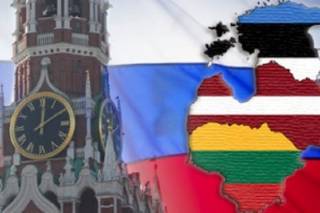
Baltic cauldron: Estonia, Latvia and Lithuania
Estonian broad-gauge armored train No. 2 in Valga on the Estonian-Latvian border in February 1919.
Estonia, Latvia and Lithuania have a combined area of half of Poland, but only a sixth of its population. These small countries - mainly due to good political choices - won their independence after the First World War. However, they failed to protect her during the next…
The only thing that unites the Baltic peoples is their geographical position. They are distinguished by confessions (Catholics or Lutherans), as well as by ethnic origin. Estonians are a Finno-Ugric nation (remotely related to the Finns and Hungarians), Lithuanians are Balts (closely related to the Slavs), and the Latvian nation was formed as a result of the merger of the Finno-Ugric Livs with the Baltic Semigallians, Latgalians and Kurans. The history of these three peoples is also different: the Swedes had the greatest influence on Estonia, Latvia was a country with a predominance of German culture, and Lithuania was Polish. In fact, the three Baltic nations were formed only in the XNUMXth century, when they found themselves within the borders of the Russian Empire, whose rulers adhered to the principle of "divide and rule." At that time, tsarist officials promoted peasant culture - that is, Estonian, Latvian, Samogitian - in order to weaken the Scandinavian, German and Polish influence. They achieved superior success: the young Baltic peoples quickly turned their backs on their Russian "benefactors" and left the empire. However, this happened only after the First World War.
Great War on the Baltic Sea
When the First World War began in the summer of 1914, Russia was in an excellent position: both the German and the Austro-Hungarian command, forced to fight on two fronts, could not send large forces and means against the tsarist army. The Russians attacked East Prussia with two armies: one was brilliantly destroyed by the Germans at Tannenberg, and the other was driven back. In autumn, the actions moved to the territory of the Kingdom of Poland, where both sides exchanged blows chaotically. On the Baltic Sea - after two "battles on the Masurian lakes" - the front froze on the line of the former border. Events on the southern flank of the eastern front - in Lesser Poland and the Carpathians - turned out to be decisive. On May 2, 1915, the central states launched offensive operations here and - after the Battle of Gorlice - achieved great success.
At this time, the Germans launched several small attacks on East Prussia - they were supposed to prevent the Russians from sending reinforcements to Lesser Poland. However, the Russian command deprived the northern flank of the eastern front of troops, leaving them to stop the Austro-Hungarian offensive. In the south, this did not bring a satisfactory result, and in the north, modest German forces conquered other cities with surprising ease. The successes of the Central Powers on both flanks of the Eastern Front frightened the Russians and caused the evacuation of troops from the Kingdom of Poland, surrounded from the north and south. The large evacuation carried out in the summer of 1915 - on August 5, the Germans entered Warsaw - led the Russian army to disaster. She lost almost one and a half million soldiers, almost half of the equipment and a significant part of the industrial base. True, in the autumn the offensive of the Central Powers was stopped, but to a greater extent this was due to the political decisions of Berlin and Vienna - after the neutralization of the tsarist army, it was decided to send troops against the Serbs, Italians and French - rather than from desperate Russian counterattacks.
At the end of September 1915, the eastern front froze on a line that resembled the eastern border of the Second Polish-Lithuanian Commonwealth: from the Carpathians in the south it went straight north to Daugavpils. Here, leaving the city in the hands of the Russians, the front turned west, following the Dvina to the Baltic Sea. Riga on the Baltic Sea was in the hands of the Russians, but industrial enterprises and most of the inhabitants were evacuated from the city. The front stood on the Dvina line for more than two years. Thus, on the side of Germany remained: the Kingdom of Poland, the province of Kaunas and the province of Courland. The Germans restored the state institutions of the Kingdom of Poland and organized the Kingdom of Lithuania from the Kaunas province.
